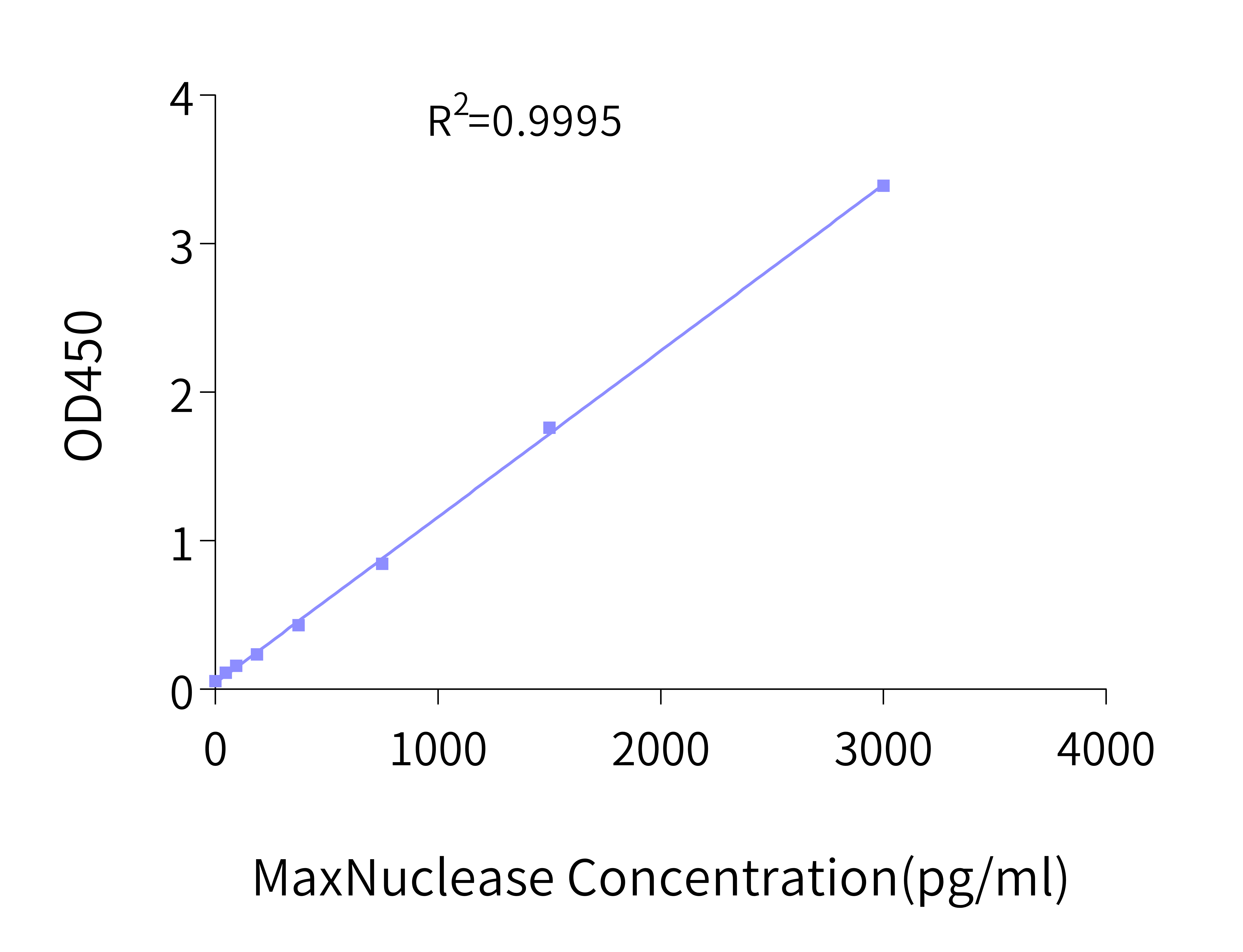MaxNuclease ELISA Kit (NUC-SE00B)
Catalog: NUC-SE00B
Order now get it on
| Product Description | Detection Principle MaxNuclease is a genetically engineered endonuclease derived from Serratia marcescens that can degrade all forms of DNA and RNA including double-stranded, single-stranded, circular, or linear RNA and DNA completely to 5'-monophosphate oligonucleotides 2-5 bases in length over a wide range of reaction conditions and is therefore widely used to completely digest and remove nucleic acid residues from biological samples. This kit uses sandwich ELISA to determine the concentration of MaxNuclease in the test sample. The capture MaxNuclease monoclonal antibody is pre-coated on the 96-well plate. MaxNuclease standard or test sample is added to the pre-coated 96-well plate and will specifically bind to the capture antibody. Then the HRP-conjugated MaxNuclease antibody is added to bind the immune complex forming the antibody-antigen-detection antibody-HRP complex. The plate is rinsed to remove extra HRP conjugated MaxNuclease antibody and then TMB is added for chromatic changes. The amplitude of the color change is proportional to the amount of MaxNuclease that specifically binds to the plate. The reaction is stopped with the addition of stop solution and the absorbance is measured at 450nm. The sample MaxNuclease concentration is calculated from the standards titration curve. |
You may also be interested in
View more associated products

